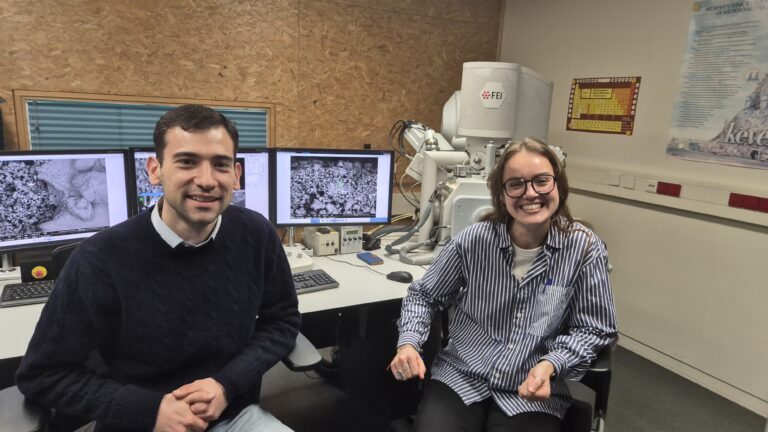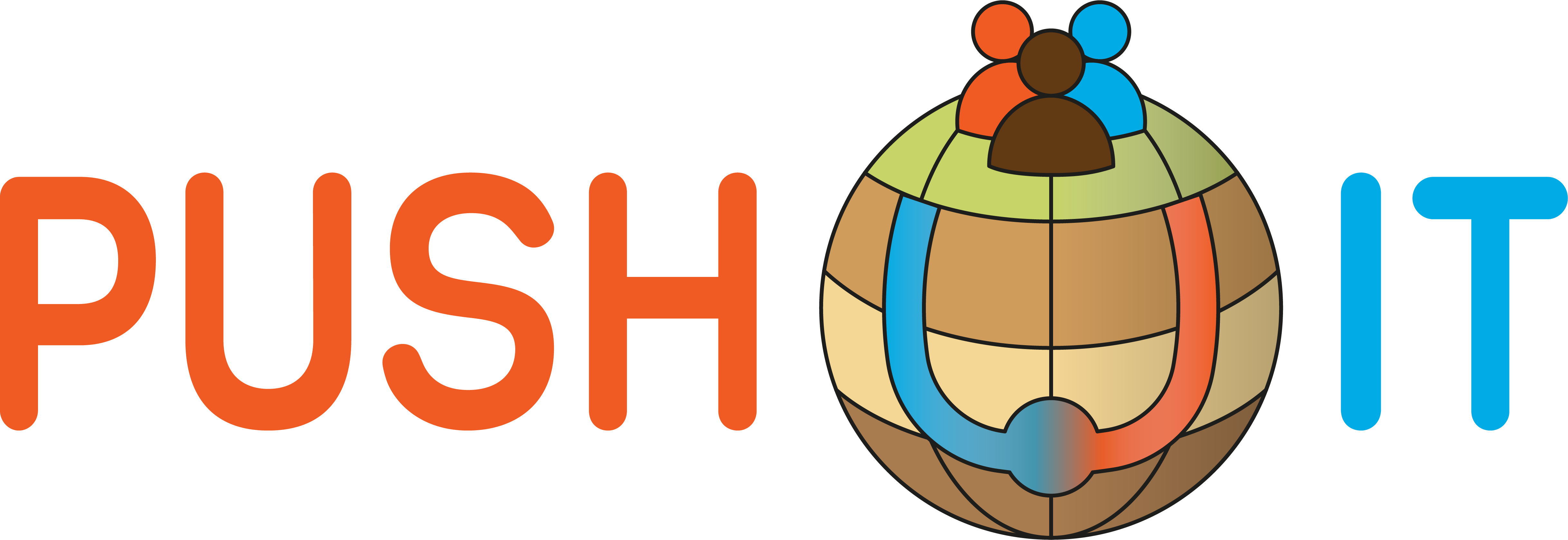Meet the scientists: Tessel Grubben and Alexis Koulidis
In this edition of Meet the Scientists we interview Tessel Grubben, PhD candidate, and Alexis Koulidis, post-doctoral researcher, both at TU Delft. Tessel and Alexis focus on well design and construction.

Can you introduce yourself?
Tessel: “I am a PhD candidate at TU Delft. I have a bachelor’s degree in civil engineering and a master’s degree in geotechnical engineering, which I both obtained at TU Delft. I also did a research master at the University of Sydney where I looked at granular flows. My PhD supervisors are Martin Bloemendal, Phil Vardon and Niels Hartog.”
Alexis: “I am a post-doctoral researcher at PUSH-IT. My supervisors are Martin Bloemendal and Phil Vardon as well. I began my academic career in Greece. I got an integrated master’s degree in mineral resources engineering at Technical University of Crete. After that, I got a master’s degree in petroleum engineering with a focus on drilling engineering at the University of Leoben in Austria. I obtained my PhD in 2023 in Energy resources and petroleum engineering at KAUST in Saudi Arabia.
My expertise is in experimental subsurface mechanics and field application. I’m particularly interested in bridging the gap between experimental studies and their practical implementations. I am focusing on translating laboratory research into real world applications.”
What is it exactly that you are researching here? What is the end goal?
Tessel: “I am looking at improving well design for High Temperature Aquifer Thermal Energy Storage (HT-ATES) systems. To be more specific, we are investigating if we could expand the diameter of the boreholes at depth. This has the potential to improve the hydraulic performance, reduce the drilling costs and mitigate clogging. However, it also raises the question of borehole stability. I do experimental and numerical analysis to determine when boreholes are stable and what conditions lead to failure. An important thing to note is that these boreholes under consideration are all in unconsolidated sands, so not sandstone, but loose grains.
The end goal is to optimize the HT-ATES systems so that it is feasible to implement them worldwide. The technique is quite well established in The Netherlands, but it needs to be implemented in more places if we want to make the energy transition happen. If I can contribute even a little bit to that, that would be great.”
Alexis: “My research primarily focuses on well construction and long-term integrity for low temperature and high temperature ATES systems. Through the development of various experimental frameworks, I investigate the optimum selection of drilling fluid and well completion techniques and development. I am currently investigating the effect of heating heating and cooling cycles on the annular materials. The aim of my work is to enhance the performance of an ATES system, while ensuring their long-term operational integrity.
My end goal is very similar to Tessel’s. We work towards implementation in other places in the world. We try to identify the challenges of HT-ATES here in Delft and try to obtain the best solutions to be able to have a well operating system in a lot of places.”

Tessel and Alexis have published a journal paper on drilling fluids. Those fluids form an impermeable filter cake to prevent the drilling fluid from flowing into the formation. The work investigates the impact of bridging additives to make the well more stable. There is a limited selection of fluids that is allowed, because of environmental considerations . The research is focussed on new and improved methods to keep the borehole stable with an expanded diameter.
You can read the paper here
Why have you chosen to research this particular subject?
Tessel: “I generally worry about climate change, so through my research I would like to positively contribute, in every which way I can, big or small. My goal is to make the energy transition happen and to develop sustainable ways of energy production. I think that is the most important motivation for me to pursue this research. Besides that, I am genuinely fascinated with granular mechanics and the behaviour of sand, so to be able to combine the both is quite nice.”
Alexis: “The challenges within the energy industry continue to inspire me to expand my knowledge and expertise with the goal of developing more efficient, cost effective and sustainable technologies for the future.”
What do you think can be the impact on society of your research?
Tessel: “I hope that through our research we can make the worldwide implementation of heat storage systems more feasible and that we are able to produce more clean and affordable energy for everyone. What I also like about PUSH-IT is that there is a focus on public engagement. For example, Alexis and I organized an excursion for high school students to introduce them to geothermal energy and storage. I enjoy those kinds of things.”
Alexis: “As a researcher our contribution extends outside the lab into various aspects, like teaching, presentations and collaborative effort. Now by sharing knowledge via educational platforms I aim to inspire the next generation of engineers and researchers. Additionally, through presentations and public outreach I seek to bridge the gap between academic research and industry practice, which ensures effective communication to stakeholders. As Tessel said, what we do for Geoweek, which we did last year, is reaching out to kids about sustainable energy, either geothermal or aquifer thermal energy storage.”


PUSH-IT is a project funded by the European Union’s Horizon Europe research and innovation programme under grant agreement No 101096566.
Funded by the European Union. Views and opinions expressed are however those of the author(s) only and do not necessarily reflect those of the European Union. Neither the European Union nor the granting authority can be held responsible for them.
